Confronting a Childhood Bully: A Tale of Empowerment and Boundaries
In a compelling narrative of personal empowerment, a woman recounts her experience with a childhood bully, “Ken,” who continued his pattern of inappropriate behavior into adulthood. Despite her attempts to maintain decorum, Ken’s persistent and intrusive comments about her personal life, even in the presence of her family, prompted her to take a stand. Seizing an opportunity during a gathering celebrating Ken’s engagement, she delivered a pointed retort that not only silenced him but also garnered support from those around them.
This incident underscores the importance of setting boundaries and addressing inappropriate behavior, even when it involves longstanding acquaintances or family friends. It also highlights the effectiveness of assertive communication in confronting and mitigating bullying behavior.
The author of the post has a longtime bully – the neighbors’ son who has been mocking her since their childhood

The author is an adult married woman now, and the bully is adult too, but this fact doesn’t stop him anyway

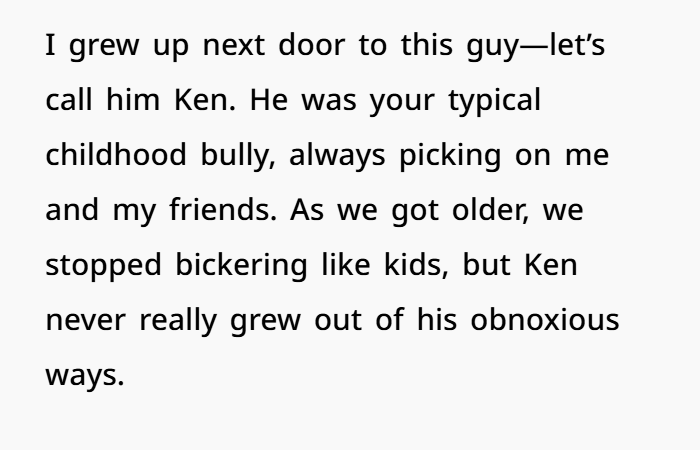
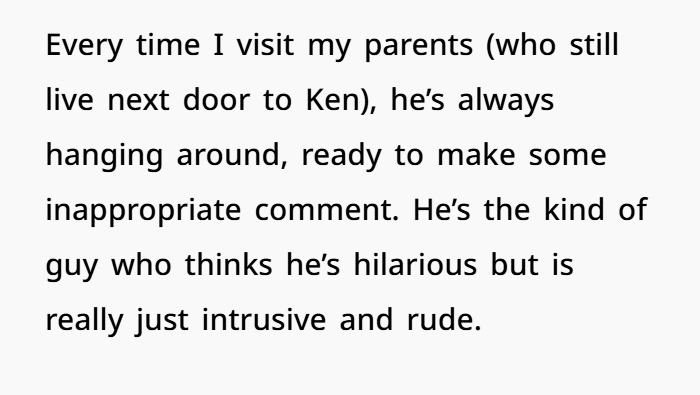
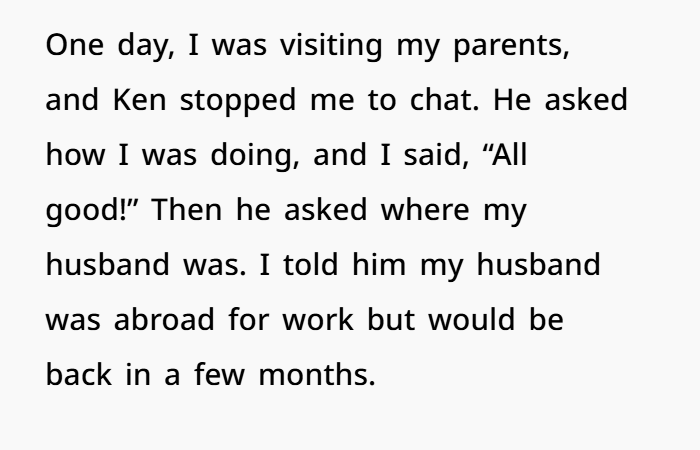
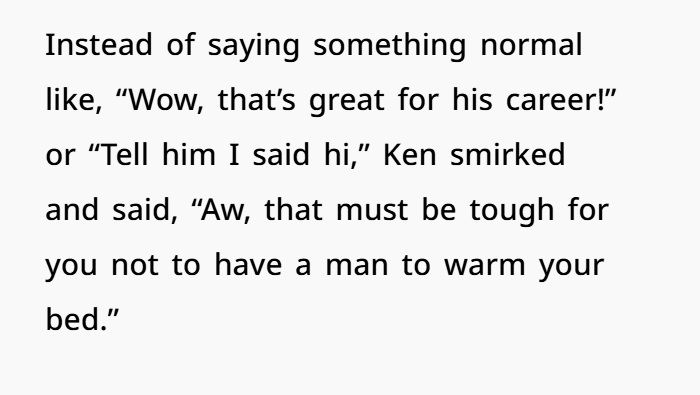
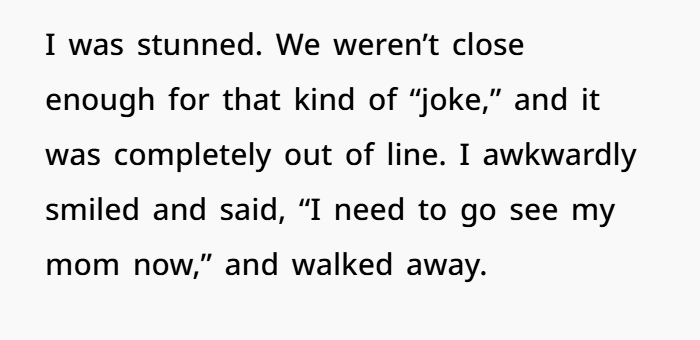

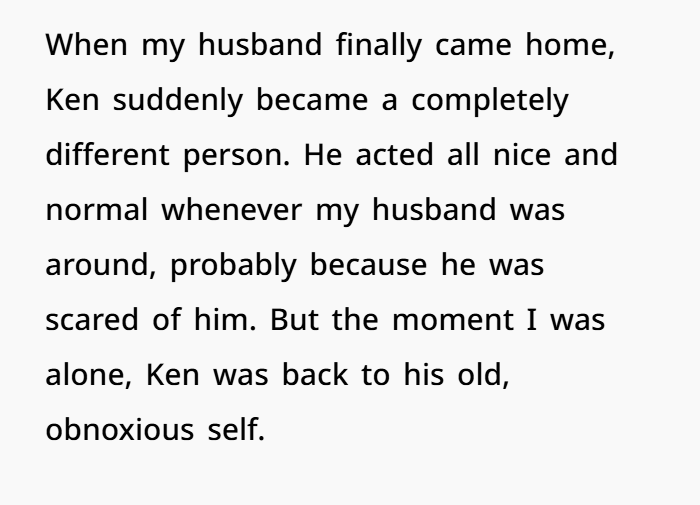
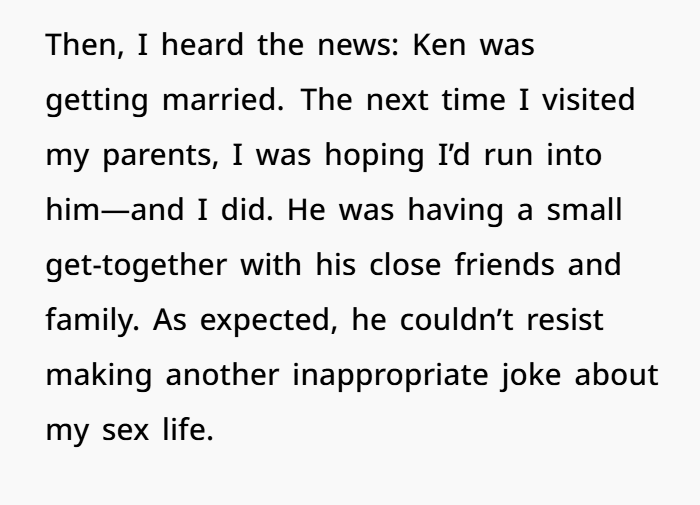


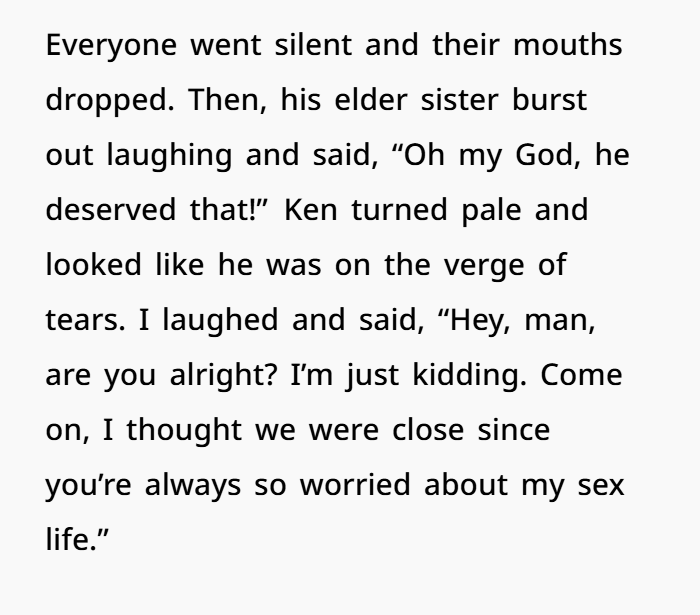
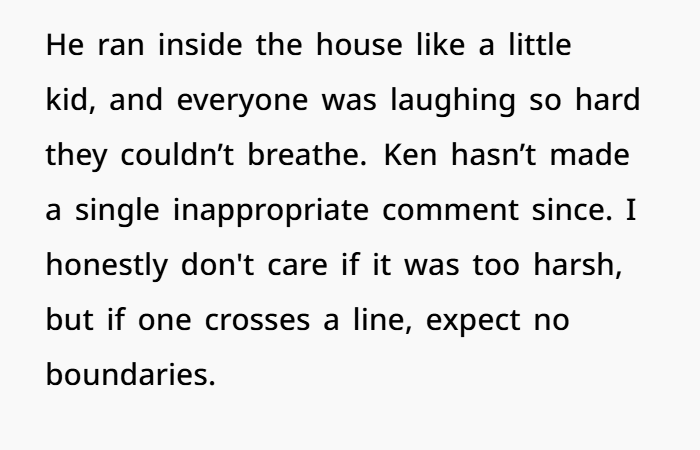
1. Understanding Adult Bullying
While often associated with childhood, bullying behavior can persist into adulthood, manifesting in various forms such as verbal abuse, manipulation, and social exclusion. Adult bullies may use humor or sarcasm to mask their harmful intentions, making it challenging for victims to address the behavior directly. Recognizing these patterns is the first step toward effectively confronting and stopping the abuse.
2. The Power of Assertive Communication
Responding to bullying with assertive communication can be a powerful tool. Techniques such as calmly addressing the inappropriate behavior, using humor to deflect, or directly questioning the bully’s intent can disrupt the cycle of abuse and reestablish personal boundaries. For instance, asking, “What was your intention with that comment?” can prompt self-reflection and deter future incidents.
3. The Role of Bystanders

The reaction of bystanders can significantly influence the dynamics of a bullying situation. Supportive responses from others, such as laughter or verbal agreement with the victim’s stance, can validate the victim’s feelings and discourage the bully from continuing their behavior. In the recounted incident, the laughter and agreement from Ken’s sister and other attendees played a crucial role in reinforcing the woman’s stand against his inappropriate comments.
4. Long-Term Impact and Coping Strategies
Persistent bullying can have lasting psychological effects, including anxiety, depression, and diminished self-esteem. Engaging in coping strategies such as seeking support from trusted individuals, practicing self-care, and, when necessary, consulting mental health professionals can aid in recovery and resilience. Establishing and maintaining clear boundaries is essential in preventing further abuse and promoting personal well-being.
Most commenters just praised the author for being both witty and strong in defending her personal boundaries



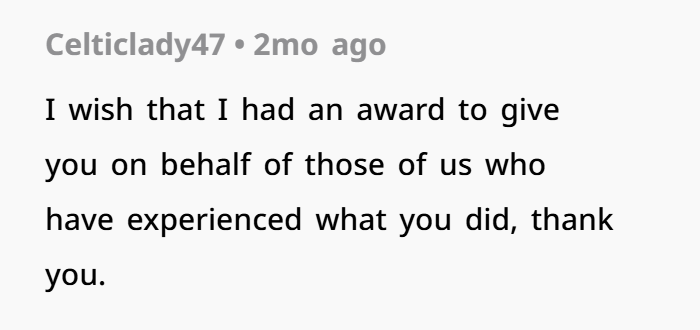
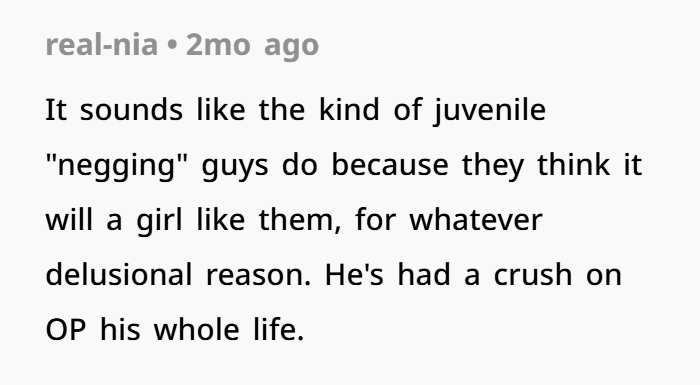
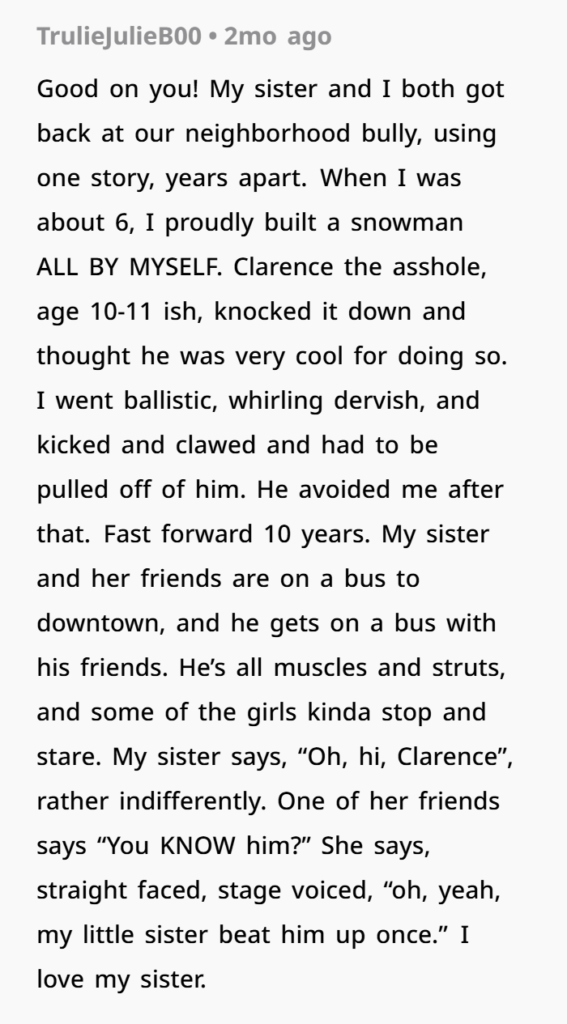
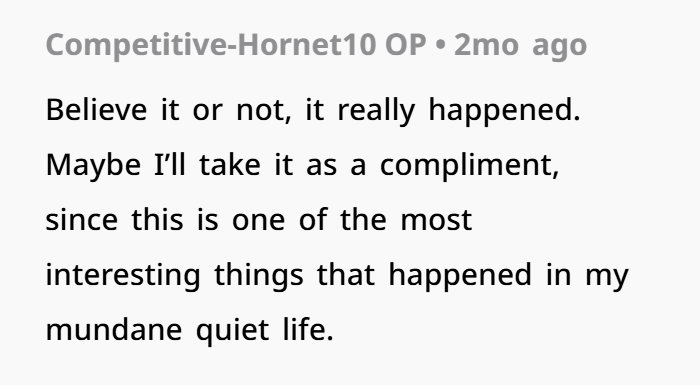
This narrative serves as a testament to the importance of confronting inappropriate behavior and the empowerment that comes from standing up for oneself. By addressing the issue directly and assertively, the woman not only halted the ongoing harassment but also set a precedent for respectful interactions moving forward.


